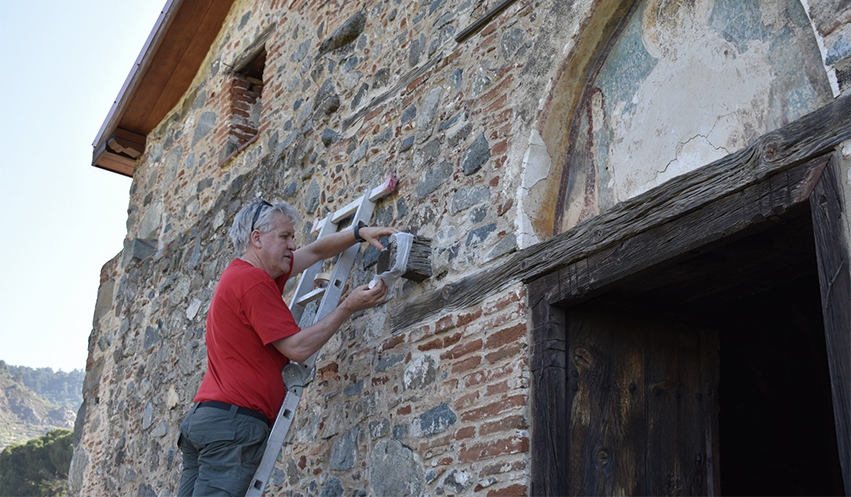The activities of the ‘Cyprus Dendrochronology Lab’ (CDL) began vigorously with the study of the Byzantine and Medieval Troodos Churches included in the UNESCO World Heritage Sites list. The churches of Panayia Podithou in Galata and Ayios Nikolaos Steyis in Kakopetria were the main focus of the study carried out in mid-November. Research at the Archangel Michael and Ayios Sozomenos churches in Galata, also provided valuable additional data.
Dating and provenancing the wood of the churches’ iconic roofs, windows, doorframes and furnishings can really help to shed light into unresolved problems in art and architectural history. Studying and analyzing Byzantine and post Byzantine icons can secure their proposed dates, which- in the absence of dedicatory inscriptions- are estimated purely based on stylistic and typological observations and assessments.
The ‘Cyprus Dendrochronology Lab’ established in the context of the Andreas Pittas Art Characterization Laboratories (APAC Labs) of the Science and Technology in Archaeology and Culture Research Center (STARC) builds on years of previous collaboration between STARC and the Cornell Tree-Ring Laboratory. Founded as a joint initiative by CyI, the Department of Antiquities, the Department of Forests and the Tree-Ring Laboratory, this effort underscores the importance of dendrochronological research in Cyprus.
Besides providing dating for wooden heritage, the lab provides data related to past environmental and climate conditions as they relate to the history of the island’s forests. As such, CDL is offering a range of synergies with CyI’s climate research group and the new center CARE-C, while its non-invasive applications have been included in the Mobile Lab of the IPERION HS project as a European resource.
The CDL, led by CyI’s Associate Professor Nikolas Bakirtzis and by Cornell’s Professor Sturt Manning and Special Researcher Brita Lorentzen, has been already particularly successful in attracting the support of local and international funding bodies. The dendrochronological study of the famous Painted Churches of the Troodos, in collaboration with the Department of Antiquities and the appropriate ecclesiastical authorities, has been awarded prestigious grants from the National Endowment for the Humanities and Dumbarton Oaks in the US and the Research and Innovation Foundation in Cyprus.
Dendrochronology has the potential to really help to enrich our knowledge of key aspects of Cypriot Heritage. Furthermore, the value of dendrochronological data for the study of the environment and of past climate phenomena – is important for our better understanding of the history of forests. In addition, the study of the same monuments has been awarded another project entitled “Invisible Heritage - Analysis and Technology” (IH-AT) led by APAC Labs/STARC Associate Research Scientist, Dante Abate, that will apply digital and analytical technologies to map these monuments in their broader context, including the pigments of wall paintings and the remains of medieval graffiti, a broad effort that will further enrich our work on these UNESCO sites.
